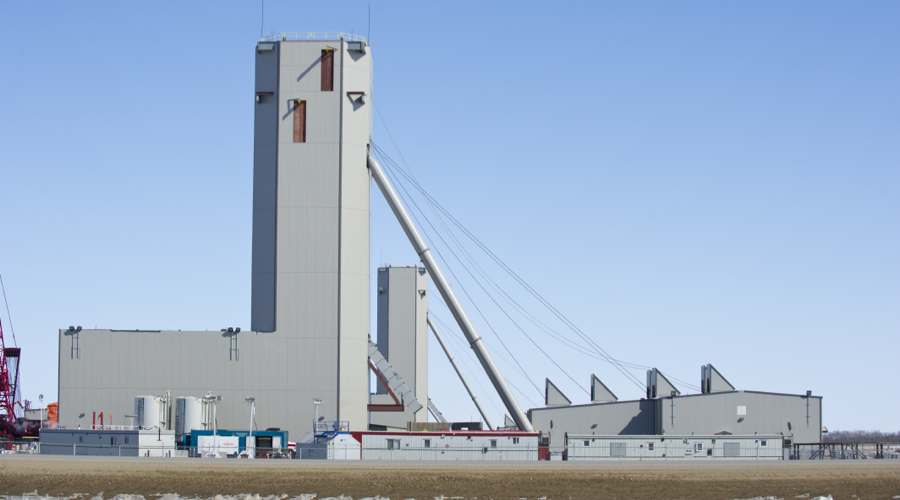
World’s largest miner BHP Billiton (ASX, NYSE:BHP) (LON:BLT), the company behind the massive $2.6 billion (CAD $3.4 billion) Jansen potash project in Canada’s Saskatchewan province, may place it in the back burner if prices for the fertilizer ingredient don’t pick up by the end of the decade.
The company, which posted Tuesday its worst-ever annual loss, had already cut $130 million from the planned $330 million capital expenditure to determine the feasibility of the Jansen project in the current financial year. And while BHP continues looking for a partner to finally take the venture off the ground, it now admits that the ongoing slump in potash prices may make it mothball the project.
“That might be more palatable to our shareholders than going ahead with a project that’s not economically attractive,” chief executive officer Andrew Mackenzie told The Telegraph.
If potash prices don’t pick up by the end of the decade, BHP would be prepared to mothball the project.
While the Melbourne-based firm is sinking shafts and installing some infrastructure, it has not fully committed itself to the project, nor received board approval for the mine, which is expected to begin operations sometime “in the decade beyond 2020.”
“Part of what we’re doing is developing a feasibility study for ultimate approval by the board, and if we weren’t serious about potash, we wouldn’t be doing that work,” BHP Billiton Canada’s head of corporate affairs told The Saskatoon StarPhoenix in March.
The mine is now 60% complete and “shaft excavation is progressing,” according to BHP’s results for the year ended in June 2016. A year ago, the project was 46% along and when the work is completed – at the current pace towards the end of 2019 – Jansen would still be nowhere near a producing mine.
RELATED: BHP said to be after Potash Corp again
When and if it finally moves into production, Jansen would be a game-changer in the potash industry, as it is expected to generate 8 million tonnes of crop nutrient a year, which would amount to nearly 15% of the world’s total.
To put that figure in perspective, the Mosaic Company’s (NYSE:MOS) Esterhazy mine is forecast to generate around 6.3 million tonnes per year after the completion of an ongoing expansion. In comparison, most of the province’s potash operations, which are among the world’s largest, have an output of 3 to 4 million tonnes per year.
 Prices for the fertilizer ingredient are not encouraging. It began its decline four years ago as weak crop prices and currency declines pinched demand. They have also suffered from increased competition following the breakup in 2013 of a Russian-Belarusian marketing cartel that previously helped limit supply.
Prices for the fertilizer ingredient are not encouraging. It began its decline four years ago as weak crop prices and currency declines pinched demand. They have also suffered from increased competition following the breakup in 2013 of a Russian-Belarusian marketing cartel that previously helped limit supply.
In recent months, potash collapse has picked up speed, putting additional pressure on producers, whose profits have been hit by falling prices, largely due to weak currencies in countries such as Brazil and low grain prices.
4 Comments
Mark
Its done. Put a fork in it. The market is already severely glutted and that’s without any K+S production on line yet. Brad Wall and friends suckered $2.6B into the hole in the ground.
GladstoneGoldMine.com
Well, it could it be that these “executives” are piss poor at predicting the future uses of these commodities?
Maybe they aren’t aware what others are doing as producers and learning, that there are things called commodity cycles. Supply and demand….It seems many are in the mindset of build the mine and the product will be used somewhere? Doesn’t MISS-MANAGEMENT come into the picture at one point?
How does a company afford to keep losing billions of shareholder funds and survive? CRAZY!!
Don’t they know, to some extent what the market is, in the business they are in?
Michael Bailie
it’s too bad. I did some exploration, hydrogeology and an evaluation well for them and they were good to work for. would go back with them in a heartbeat/
Pops
Good for them, you would swear they just got into mining the way they handle that project. Management is a joke and so is the contractor they have sinking for them.